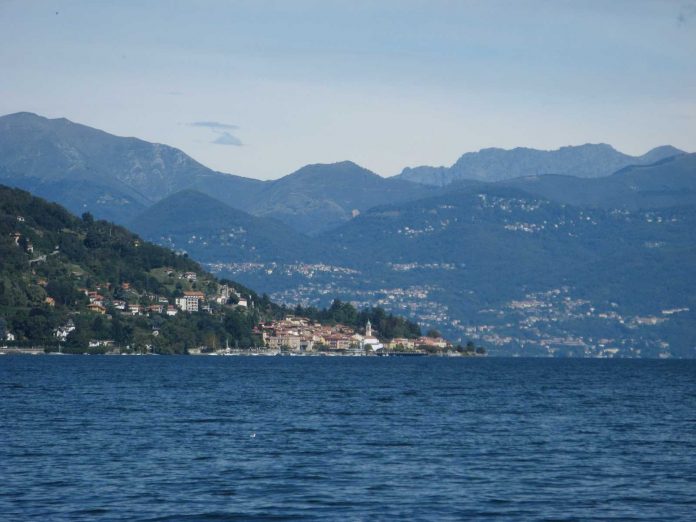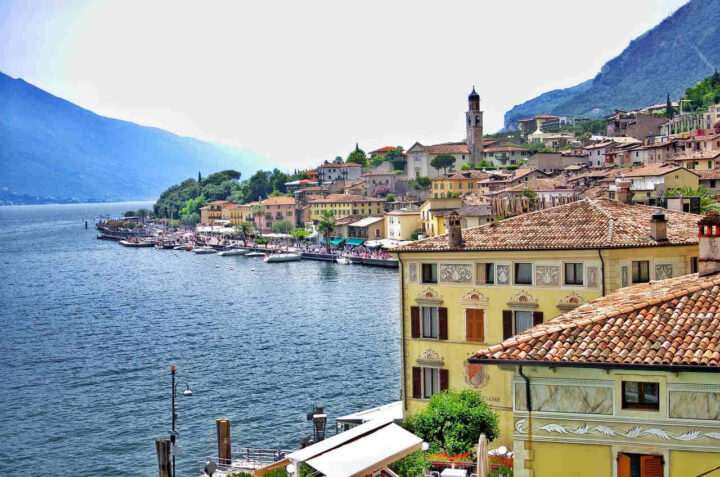
Garda Lake climate and location
Garda Lake also called in Italian “Lago di Garda” is the most largest lake in Italy having 370 km² surface and a water volume of 50.35 billion m³.

Being situated at about half distance between Brescia and Verona, or you can also say between Venice and Milan, at the limit of the Dolomites Mountains, Garda Lake is a popular touristic and holiday location.
For the Italians it is more important that the lake is situated among their three regions: Lombardy, Veneto and Trentino-Alto Adige.
The lake has a very friendly climate all year long, probably with a little bit hot summers, but winter with rarely rainy days, which allow the locals to cultivate many Mediterranean product as: olives, lemons, oranges, kiwi, wines and truffle.
This climate and the tranquility inspired many painters, writers and scientist to choose it as a favorite destination or as a source of inspiration. Probably for this reason Garda Lake has also become an attraction for the group of researchers as scientific challenge.
Garda Lake as reason of study and experiment
Garda Lake become a case of study for an international research teams from two important European Universities, UniTrento – University of Trento, Italy and the University of Utrecht from Netherlands.
They have just discovered that Earth rotation modifies in a significant way the movement of the water in Garda Lake, affecting directly the deep water mixing, and also the whole lake ecosystem.
Their results was published the magazine of the Nature group as a Scientific report.
Earth’s spin involved in Garda lake’s water lifting
As an outcome of collaboration between the research team from the Department of Civil, Environmental and Mechanical Engineering of the University of Trento, led by Marco Toffolon and those by the Institute for Marine and Atmospheric Research at Utrecht University, led by Henk Dijkstra, tell us the following:
“We achieved these results thanks to an intense field campaign, supported by the results of numerical simulations of Lake Garda hydrodynamics, that kept our researchers busy in Trento and Utrecht for two years, from 2017 to 2018.”
Their briefly explanation that follows describe in more understandable way about this whole study:
“According to our study, when the wind blows along Lake Garda’s main axis, the Earth’s spinning causes a secondary circulation which displaces the water laterally, from one coast to the other.
This creates a difference in water temperature between the eastern (Veneto) and western (Lombardia) shore and, highly relevant for the lake’s ecology, contributes to the transport of oxygen, nutrients and other substances from the surface to the deep layers and vice versa.
In detail, in the case of Foehn winds, cold water surfaces along the eastern side of the lake (upwelling) and warmer water moves down along the western side (downwelling), moving like a water energy in between two sides.
Between February and April in particular, when the lake water temperature is at its lowest, the vertical movement can reach even the bottom of the lake, that is at a depth of 350m and this only by the Earth’s spin.
We did not expect to observe in Garda Lake an event that is typical of the coastal areas of oceans and large lakes.”
But what if
I was wondering if the Coriolis effect had something to do with the outcome of this study? I would be also curious what would have happened if Garda Lake would be in the southern hemisphere?
“Because of the rotation of the Earth, the Coriolis effect means that hurricanes and other giant storm systems swirl counter-clockwise in the Northern Hemisphere, and clockwise in the Southern Hemisphere.
In theory, the draining water in a toilet bowl (or a bathtub) should do the same.”



